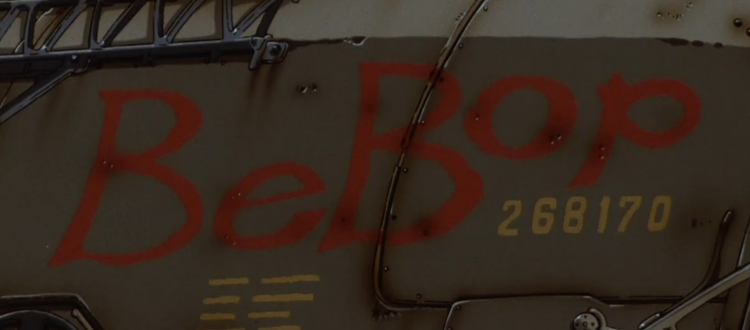Adios, Cowboy: Review 1 – Asteroid Blues
I’ve moved in writing circles for almost a decade. During that time, I have borne witness to the elders passing down a ubiquitous lesson unto assiduous neophytes, who hope to glean the magic that will elevate their writing from the slush pile to the production queue. The wizened speak the following words in hushed tones: you have to know the rules in order to break the rules. Much editorial, often times comically charged editorial, tends to follow this statement. Epistemological debate ensues from the fringes as frustrated people demand to know what even is a rule? Germaine to this point, a publisher recently tweeted about why good writing needs to empower a protagonist with a sense of agency.
In said publisher’s opinion, only dull characters (and equally dull stories) show a character who suffers the events of the story. A good writer gives their characters choices – or at least the illusions of choice – such that their actions have sufficient weight to make an impact on the audience. Generally applied, this idea makes sense. If a character stands still while the story moves around them, there’s a good chance the events of the story will feel alienating and dull. Absent agency, audience engagement might even be reduced to a sort of voyeuristic gaze. Cowboy Bebop, however, is not interested in general applications of story structure. On first principles, it throws character agency into the airlock and mashes the large button labeled, “vent.”
Welcome to Adios, Cowboy. Shall we begin?
Spike Spiegel, half of the starship Bebop’s bounty hunting crew, is a thrall to narrative construction beyond his control. From the moment he and Jet Black, his partner-in-freelance-law-enforcement, set foot on an asteroid colony called Tijuana, events happen to Spike rather than because of him. Even the choice to land on Tijuana in search of fugitive Asimov Solensen and his bounty of 2.5 million woolongs (not as much as it sounds in consideration of space tolls that cost ₩5,000) comes from Jet appealing to Spike’s desire for carnitas. Let’s walk through the progression of events to illustrate the point.
- Spike is practicing martial arts on the Bebop while Jet makes meatless beef and bell peppers.
- Spike goes to Tijuana, mostly for the carnitas, and then talks to a mystic/shaman-type about where he might find Solensen.
- Spike accidentally runs into Solensen while having a pee in a gas station bathroom.
- Jet overhears some gangsters explaining that Solensen ripped off his fellow drug cartel cronies, and that is why there is a bounty on his head.
- Spike meets Solensen’s girlfriend, who recognizes him as a bounty hunter, moments before Solensen strangles Spike in a drug fueled fit of rage – not because Spike is a bounty hunter, but because Spike is making time with Solensen’s girl.
- Spike, somehow, shows up at the next place that Solensen goes to try and fence his score.
- Spike chases Solensen, leading to the fugitive’s untimely extrajudicial murder by the police. This denies Spike and Jet their bounty.
- Spike returns to practicing marital arts on the Bebop as Jet makes meatless beef and bell peppers.
Structurally, this is a perfect story. The writing moves from order to chaos and then back to order again. The call to adventure is fast and to the point. Invisible strokes of the pen deliver a textbook waltz of narrative escalation, retreat, and denouement. These 20 minutes of television are writer’s craft 101. Here’s the twist, whenever the story is focused on Spike and Jet, it shows them dancing to other people’s music.
Jet’s idea to source leads on Solensen’s whereabouts from the local police amounts to nothing. He only finds out about Solensen’s plans to unload his stolen drugs through sheer luck. Similarly, Spike’s idea to consult a shaman for leads send him to the seemingly vast outskirts of Tijuana in search of the “red eyed coyote.” It is only chance (or fate, if you’re into that sort of thing) that leads Spike to the exact right gas station toilet to make first contact with his bounty. None of the actions Spike or Jet take of their own volition lead to useful outcomes. Only the convenience of the story unfolding around them leads to the ultimate conflict with Solensen. Bearing this in mind, the rules say this episode should be dull and plodding. Is it? Not on your life.
This invites an inevitable question, why does it work? I can answer that question in two-and-a-half words: Kung Fu Jazz. There is actual Kung Fu set to up-tempo jazz music in Asteroid Blues. The focus on Spike’s movement in his brawl with Solensen burs the artistic line between combat and dance. This, alone, would make me content to look past any potential issues of agency. Yet we can also view the application of Kung Fu Jazz through a lens that pulls together two unnatural things for a net-positive outcome.
Let’s take a step back and apply this metaphor to the story’s largely silent, but richly effective, world building. The episode opens on the Bebop jamming through space with the aid of some infrastructure-dependent technology that makes interplanetary (perhaps interstellar) civilization possible. The first place we see connected to this obvious wonder of technology is a dump of an asteroid colony.
Space Tijuana’s buildings are run-down. Drug-pushing mobsters plague the people who identify as the generation that dug the colony. For reasons unknown to the audience, the police would rather blockade the colony and shoot down a criminal in the cold of space than put boots on the ground in the community they ostensibly protect. Here, the romance of space travel and the “cowboy” life of a mercenary combine with reality of rustbelt urban spaces to make a Kung Fu Jazz of place.
If the episode opened on the heels of an infodump that spelled out the rigours of life in 20XX and the plight of the working-class people – something quite familiar to a post-Alien audience (looking at you, Joss Whedon) – there would be a stronger burden on the characters to give us something new within the setting. Instead, the first act of the episode is non-stop Kung Fu Jazz. The audience is not a voyeur, but a tourist in a place that is mundane for the characters but boiling over with promise for us. This provides a meaningful payoff in seeing Spike and Jet move through this space. Moreover, if we, as an audience, see ourselves as tourists, then we might be more forgiving of the story skipping over the dull and tedious parts of detective work (e.g. the episode magically having Spike appear for the final conflict with Solensen).
One final question remains: if Asteroid Blues were a stand-alone piece of work and not part of a larger arc, would I respond differently to its Kung Fu Jazzing the rules? Does this approach to structural subversion only work because a first episode/chapter/session exists under the aegis of a grace period? Perhaps. If this were a short film, I can see myself reacting with some measure of disappointment. I would ask what Asteroid Blues does other than set a promising tone before vanishing into the ether.
Setting that line of thought aside for the time being, the takeaway lesson from this episode should be a recognition of how Asteroid Blues is masterful in taking the audience through a single closed loop within the in medias res lives of its cast. Even if it did nothing else, this snapshot makes me want more. It shows me everything while telling me very little, and hitting that note while also defying expectations on character agency is a damn fine day’s work.














Insightful indeed! I remember this episode clearly, and the lack of agency didn’t really occur to me until you pointed it out. I was also taken with the fast pace and was having too much fun. 😉
A damn fine day’s work indeed.
Pingback : Adam Shaftoe: Critic and Author » Adios, Cowboy – Arc 2 – Day 1
Very well said, and very insightful.
What I like here is that you really made a point of , well, pointing out that this story does work while it breaks the rules, because it breaks the rules. This is part of what was so great about BeBop – at the start everything happened TO the protags, not BECAUSE of the protags, and it was in that stew they found and developed their own agency, which made it all the more powerful when they finally had it.
And I do love the kind of stories that make the choice to more accurately reflect reality – sometimes sheer dumb luck happens. Sometimes nothing turns out the way you want no matter how hard you work at it. I like stories that acknowledge that.
I will admit that by the time I got half way through the series I was desperate to see them do something of their own volition and some consequence emerge from it. That said, i would not have got past the half-way point if it weren’t for the fact that Asteroid Blues absolutely hits it out of the park.